Flow Measurement
We offer a range of A Flow Meter Is Used To Indicate The Amount Of Liquid, Gas, Or Vapor Moving Through A Pipe Or Conduit By Measuring Linear, Non-Linear, Mass, Or Volumetric Flow Rates. Since Flow Control Is Often Essential, Measuring The Flow Of Liquids And Gasses Is A Critical Need For Many Industrial Applications – And There Are Many Different Types Of Flow Meters That Can Be Utilized Depending On The Nature Of The Application.
In various industrial applications, flow meters play a crucial role in measuring the flow of liquids, gases, or vapors through pipes or conduits. They provide valuable data by indicating linear, non-linear, mass, or volumetric flow rates, helping to maintain optimal flow control. With a wide array of flow meter types available, selecting the most suitable one is essential for efficiency and accuracy. When making a choice, it's important to take into account intangible factors such as the familiarity and experience of plant personnel with different flow meter technologies, ease of maintenance, the availability of spare parts, and the historical mean time between failures at the specific plant site. Considering these elements ensures that the chosen flow meter will operate effectively and support the overall goals of the industrial process.

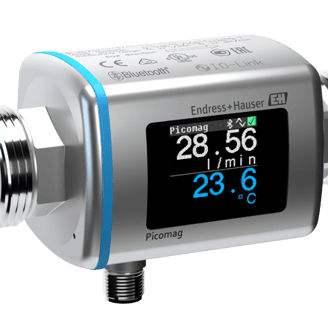
Electromagnetic Flow Meter
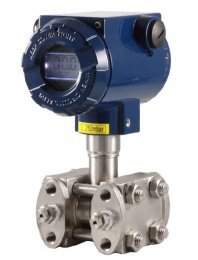

Electromagnetic Flowmeter
The Electromagnetic Flow meter Is An Instrument For Measuring Conductive Liquids Based On Faraday’s Law Of Electromagnetic Induction. Electromagnetic Flowmeters Have A Series Of Excellent Characteristics That Can Solve Problems That Are Difficult To Apply With Other Flow meters, Such As The Measurement Of Dirty Flows, Mud, And Corrosive Flows.
Advantage:
The Measurement Channel Is A Smooth Straight Tube And Will Not Be Blocked. Suitable For Measuring Liquid-Solid Two-Phase Fluids Containing Solid Particles, Such As Pulp, Mud, Sewage, Etc.;
There Is No Pressure Loss Caused By Flow Detection, And The Energy Saving Effect Is Good;
The Measured Volumetric Flow Rate Is Virtually Unaffected By Changes In Fluid Density, Viscosity, Temperature, Pressure And Conductivity;
Large Flow Range And Wide Caliber Range;
Corrosive Fluids Can Be Used.
Disadvantages:
Liquids With Very Low Conductivity, Such As Petroleum And Oil Products, Cannot Be Measured;
Cannot Measure Gas, Steam And Liquids Containing Large Bubbles;
Cannot Be Used At Higher Temperatures.
Applications
Electromagnetic Flow meters Have A Wide Range Of Applications.
Large-Diameter Instruments Are Mostly Used In Water Supply And Drainage Projects.
Small And Medium Diameters Are Often Used In High-Demand Or Difficult-To-Measure Situations, Such As Blast Furnace Cooling Water tower Control In The Steel Industry, Measurement Of Pulp Liquid And Black Liquor In The Papermaking Industry, Strong Corrosive Liquids In The Chemical Industry, And Slurry In The Nonferrous Metallurgical Industry.
Small Diameter And Micro Diameter Are Often Used In The Pharmaceutical Industry, Food Industry, Biochemistry And Other Places With Hygienic Requirements.
Electromagnetic Flowmeter Can Also Be Used For Partially Filled Pipe Flow Measurement.
Ultrasonic Flowmeter
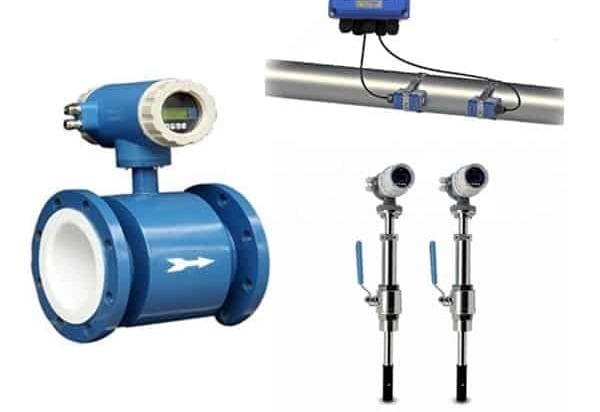

LUltrasonic Flowmeter Is An Instrument That Measures Flow By Detecting The Effect Of Fluid Flow On Ultrasonic Beams (Or Ultrasonic Pulses). According To The Principle Of Signal Detection, Ultrasonic Flowmeters Can Be Divided Into Propagation Velocity Difference Methods (Direct Time Difference Method, Time Difference Method, Phase Difference Method And Frequency Difference Method), Beam Offset Method, Doppler Method, Cross-Correlation Method, And Spatial Filtering Method. And Noise Method, Etc.
Ultrasonic Flowmeters Are The Same As Electromagnetic Flowmeters. Because There Are No Obstructions In The Flow Channel Of The Instrument, They Are Both Unobstructed Flowmeters. They Are A Type Of Flowmeter Suitable For Solving Difficult Problems Of Flow Measurement, Especially In Large-Diameter Flow Measurement. The Advantages.
Advantages And Disadvantages
Advantages:
Non-Contact Measurement Is Possible;
Measurement Without Flow Obstruction And No Pressure Loss;It Can Measure Non-Conductive Liquids And Is A Supplement To The Electromagnetic Flowmeter For Non-Obstruction Measurement
Disadvantages:
The Travel Time Method Can Only Be Used For Clean Liquids And Gases; While The Doppler Method Can Only Be Used To Measure Liquids Containing A Certain Amount Of Suspended Particles And Bubbles;
The Measurement Accuracy Of Doppler Method Is Not High.
Application
The Transit Time Method Is Applied To Clean, Single-Phase Liquids And Gases. Typical Applications Include Tap Water, Diesel, Etc.
In Terms Of Gas Applications, We Have Good Experience In The Field Of High-Pressure Natural Gas;
The Doppler Method Is Suitable For Two-Phase Fluids With A Low Heterogeneous Content. For Example: Raw Sewage, Factory Effluents, Dirty Process Fluids; Generally Not Suitable For Very Clean Liquids
Coriolis Mass Flow Meter
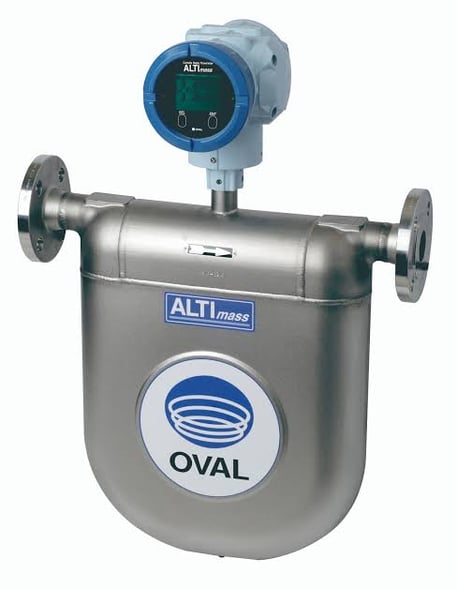

Coriolis mass flow meter This flow meter is a novel instrument that directly and precisely measures fluid mass flow. The main structure uses two side-by-side U-shaped tubes, and the bent parts of the two tubes vibrate slightly toward each other, and the straight tubes on both sides will vibrate accordingly. That is, they will move closer or open at the same time, that is, the vibrations of the two tubes are synchronous and symmetrical.
If the fluid is introduced into the tube and flows forward along the tube while the tube is vibrating synchronously, the tube will force the fluid to vibrate up and down with it.
Advantages
Coriolis mass flow meters directly measure mass flow and have high measurement accuracy.
A wide range of measurable fluids. Various liquids including high viscosity liquids, slurries containing solids, liquids containing trace amounts of gas, and medium and high pressure gases with sufficient density.
The vibration amplitude of the measuring tube is small and can be regarded as an inactive part. There are no obstructions and movable parts in the measuring pipeline.
It is not sensitive to the upstream flow velocity distribution, so there is no requirement for upstream and downstream straight pipe sections.
The measured value is insensitive to fluid viscosity, and changes in fluid density have little impact on the measured value.
Can perform multi-parameter measurements. Just like measuring density, temperature, and derived from this measure the concentration of solute contained in a solution.
Disadvantages
The zero point of the Coriolis mass flowmeter is unstable and causes zero point drift, which affects the further improvement of its accuracy. As a result, many models of instruments have to divide the total error into two parts: basic error and zero-point instability measurement.
Coriolis mass flow meters cannot be used to measure low-density media and low-pressure gases. The gas content in the liquid above a certain limit (varies by model) can significantly affect the measured values.
Coriolis mass flow meters are sensitive to external vibration interference. In order to prevent the influence of pipeline vibration, most models of Coriolis mass flow meters have relatively high requirements for installation and fixation of flow sensors.
It cannot be used for larger pipe diameters, currently limited to less than 200mm.
Wear, corrosion or sedimentation of the inner wall of the measuring tube will affect the measurement accuracy. This is especially true for Coriolis mass flow meters with thin-walled tube measuring tubes.
Most models of Coriolis mass flow meters are heavy and bulky.
expensive. The ordinary price is 5,000 to 10,000 US dollars for a set, which is about 2 to 8 times that of electromagnetic flowmeters of the same caliber.
Applications
Coriolis mass flow meters are the best choice for applications like:
Food & Beverage
Pulp and paper
Petrochemical
Oil & Gas
Power
High Viscosity
Paint
Mining
Process Control
Water and wastewater
And numerous other industries
Thermal Mass Flow Meter
Thermal flow meter sensors contain two sensing elements, a speed sensor and a temperature sensor. They automatically compensate and correct for gas temperature changes.
The electric heating part of the instrument heats the speed sensor to a certain value higher than the working temperature, so that a constant temperature difference is formed between the speed sensor and the sensor that measures the working temperature. When the temperature difference is kept constant, the energy consumed by electric heating, which can also be said to be the heat dissipation value, is proportional to the mass flow rate of the gas flowing through it.
Advantages
High reliability
Good repeatability
High measurement accuracy
Small pressure loss
No moving parts
Range ratio wide
quick response
No temperature and pressure compensation required
Disadvantages
Due to changes in cp value and thermal conductivity, the measured value will change greatly and cause errors;
If the gas being measured is scaled on the tube wall, it will affect the measured value, and it has the disadvantage of being easily blocked;
Thermal mass flow meters for pulsating flows and liquids will be limited in their use for viscous liquids.
The gas is required to be dry and pollution-free: Gas with high humidity affects the heat exchange on the sensor surface, which in turn affects the output results. Particulate matter also has an impact on sensor output.
Not suitable for high viscosity gases: For high viscosity gases, the performance of the thermal gas mass flow meter may be affected. Because the heat transfer characteristics of the gas will change.
Applications
Thermal gas mass flow meter is a new instrument used to measure and control gas mass flow.
Gas mass flow measurement in industrial pipelines
Measurement of flue gas flow rate from chimney
Calciner flue gas flow measurement
Air flow measurement in gas process
Compressed air flow measurement
Gas flow measurement during half-channel body chip manufacturing process
Gas flow measurement in sewage treatment
Gas flow measurement in heating ventilation and air conditioning systems
Flux recovery system gas flow measurement
Combustion gas flow measurement in combustion boilers
Gas flow measurement of natural gas, flare gas, hydrogen and other gases
Carbon dioxide gas flow measurement during beer production
Gas mass flow measurement in the production process of cement, cigarette and glass factories
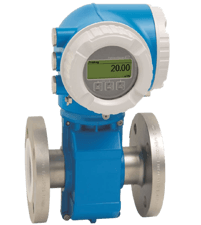

Differential Pressure Flowmeter
Mobile Shelving
A Differential Pressure Flowmeter Is An Instrument That Calculates Flow Based On The Differential Pressure Generated By The Flow Detection Component Installed In The Pipeline, The Known Fluid Conditions, And The Geometric Dimensions Of The Detection Component And The Pipeline.
The Differential Pressure Flow Meter Consists Of A Primary Device (Detection Component) And A Secondary Device (Differential Pressure Conversion And Flow Display Instrument). Differential Pressure Flowmeters Are Usually Classified In The Form Of Test Pieces, Such As Orifice Flowmeters, Venturi Flowmeters, Velocity-Averaging Tube Flowmeters, Etc.
The Secondary Devices Are Various Mechanical, Electronic, Electromechanical Integrated Differential Pressure Gauges, Differential Pressure Transmitters And Flow Display Instruments.
The Detection Parts Of Differential Pressure Flow Meters Can Be Divided Into Several Categories According To Their Working Principles: Throttling Device, Hydraulic Resistance Type, Centrifugal Type, Dynamic Head Type, Dynamic Head Gain Type And Jet Type.
Advantages:
The Most Widely Used Orifice Flow Meter Has A Solid Structure, Stable And Reliable Performance, And Long Service Life;
It Has Such A Wide Range Of Applications That No Other Type Of Flow Meter Can Compare With It So Far;
The Detection Parts, Transmitters, And Display Instruments Are Produced By Different Manufacturers To Facilitate Production With Economies Of Scale.
Disadvantages:
Measurement Accuracy Is Generally Low;
The Range Is Narrow, Generally Only 3:1~4:1;
The Requirements For On-Site Installation Conditions Are High;
Large Pressure Loss (Referring To Orifice Plate, Nozzle, Etc.).
Applications
Differential Pressure Flow Meters Have A Particularly Wide Range Of Applications. Various Objects Have Applications In Flow Measurement Of Closed Pipes.
For Example, In Terms Of Fluids: Single Phase, Mixed Phase, Clean, Dirty, Viscous Flow, Etc.;
Working Status: Normal Pressure, High Pressure, Vacuum, Normal Temperature, High Temperature, Low Temperature, Etc.;
In Terms Of Pipe Diameter: From Several Mm To Several Meters;
Flow Conditions: Subsonic, Sonic, Pulsating Flow, Etc..
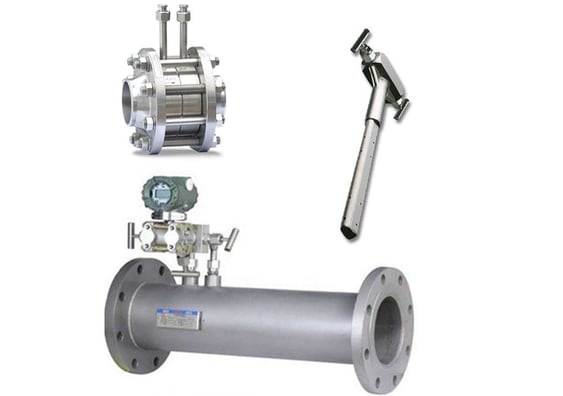

Vortex flow meters
Mobile Shelving
Vortex flow meters offer many advantages for flow measurement including easy installation without impulse lines, no moving parts to maintain or repair, less leak potential and a wide flow turndown range. Vortex meters also offer very low power consumption, allowing for use in remote areas.Vortex flow meters measure fluid velocity using a principle of operation referred to as the von Kármán effect, which states that when flow passes by a bluff body, a repeating pattern of swirling vortices is generated.n a Vortex flow meter, an obstruction in the flow path, often referred to as a shedder bar, serves as the bluff body. The shedder bar causes process fluid to separate and form areas of alternating differential pressure known as vortices around the back side of the shedder bar.Vortex Meter automatically adjusts for changes in density, making it easy to accurately measure mass and corrected volume in steam and liquid applications. With safety and reliability being at the pinnacle of our proprietary design, the all-cast, gasket- free, sealed meter body eliminates leak points to keep your operations up and running. No moving parts or need to install impulse lines means fewer process upsets and smoother operations for your plant.The vortices cause a small sensing element either behind or within the shedder bar to oscillate back and forth at a specific frequency. The velocity of the working fluid is directly proportional to this frequency of the vortices generated by the shedder bar’s unique geometry. With the known cross sectional area of the pipe, volumetric flow can be calculated.
Often Vortex flow meters will also utilize a pressure and/or temperature sensor to achieve a compensated mass flow measurement.
Additionally, Vortex meters are unique in that they can accommodate liquids, gasses, steam and corrosive applications. Vortex flow meters are also able to withstand high process pressures and temperatures.Vortex Flow Meter Is A Flow Meter For Flow Rate Of Gases (Air, Oxygen, Nitrogen, Coal Gas, Natural Gas, Chemical Gas, Etc.). It Could Be Used In Automatic Control System As Flow Transmitter
Reviews
• Without movable parts and adopt simple structure, easy to install and maintain.
• The product is with stable performance and no zero drifting, offering pipe and insertion sensor type options.
• Wide measurement range, the highest range ratio could reach to 20:1
• Low pressure loss and consumption.
• Assemble with anti-interference circuit and anti-vibration sensors, which could ensure anti-vibration performance of the product.
• digital gas vortex flow meter is a flow meter operating with Karman Vortex principle for flow rate of gases (air, oxygen, nitrogen, coal gas, natural gas, chemical gas, etc.). It could be used in automatic control system as flow transmitter.
Diameter DN15~DN1800 (mm)
Accuracy Pipe type: Class 1.0 Insertion type: Class 2.5
Temp. range -40℃~+400℃
Pressure 1.6 MPa (offer 2.5Mpa and 4.0Mpa customization)
Flow rate 5-60m/s
Output Voltage pulse, 4-20mA output, HART, Modbus, RS485, RS232 options.
Item Data
Medium Air,nitrogen, coal gas, natural gas, chemical gas,steam etc.
Accuracy Pipe type: Class 1.0 Insertion type: Class 2.5
Medium temperature -40℃~+400℃
Nominal pressure ≤1.6Mpa (offer ≤2.5Mpa and ≤4.0Mpa customization)
Flow rate 5-60m/s
Output Voltage pulse, 4-20mA output, HART, Modbus, RS485, RS232 options.
Installation Flange, clamp flange, insertion, threat, clamp connection
Power 12~28VDC;85~265VAC (Remote display);3.6V lithium battery (on site display)
Operating condition Temperature: -25℃~60℃ Humidity: 5%~90%
Housing material 1Cr18Ni9Ti
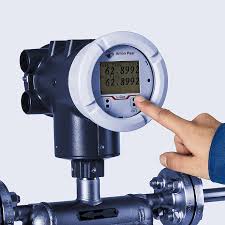

Non-Intrusive Ultrasonic Flow Measurement
Non-Intrusive Ultrasonic Flow Measurement
Non-Intrusive Ultrasonic Flow Measurement Technologies Measure Virtually Anything That Flows: Liquids As Well As Gases And Steam. Our Proprietary Clamp-On Ultrasonic Flow Meters Enable Operators To Simply Attach The Transducer To The Outside Of The Pipe – Without Any Interruption To Operations Or Any Risk Of Leakage. Our Products Meet The Maximum Requirements Of Industrial Production And Safety, And Deliver The Highest Level Of Plant Availability. Ultrasonic Systems Determine The Volumetric Flow Rate According To The Transit-Time Difference Method. Since The Ultrasonic Signal That Is Irradiated Into The Pipe Is Carried By The Fluid Flowing Inside, A Time Delay Occurs Between The Acoustic Transit Time Both With And Against The Flow Of Direction. This Time Delay Can Be Measured Very Accurately. The Transmitter Calculates The Volumetric Flow Rate Based On The Parameters Input For The Pipe Geometry And The Physical Properties Of The Fluid Stored In The Internal Database. Non-Intrusive Ultrasonic Gas Metering. Clamped Onto The Outside Of The Pipe Wall, These Bi-Directional Gas Flow Measurement Devices Measure Any Kind Of Gas. They Are Available As Both Portable And Stationary Types. By Integrating Additional Process Parameters Such As Pressure And Temperature, Gas Flow meters Also Provide High Precision Measurement Of Mass Flow Rate As Well As Operational And Standard Volumetric Flow Rates. It Is Also The Flow Meter Of Choice Wherever Gas Poses A Hazard, Be It Explosive, Toxic, Or Chemically Aggressive. Non-Intrusive Ultrasonic Flow Meters Are Used Wherever Something Flows. Clamp-On Technology Opens Up An Unveiled Wide Range Of Applications As The Device Reliably Measures The Flow Of Virtually Any Fluid, Be It Liquid, Gas Or Steam, Regardless Of The Flow Direction (Bi-Directional) And Over An Extremely Wide Measuring Range. Due To Its Practical Advantages, External Flow Measurement With Clamp-On Ultrasonic Transducers Has Become A Standard Measuring Technique In A Broad Range Of Industries And Applications.
Also Called The Wall Mounted Ultrasonic Flow Meter.
With The Remote Mount Transmitter,
Clamp On Ultrasonic Flow Meter, Could Be Applied To A Variety Of Liquid Applications.
Including:
Ultra Pure Liquids, Water, Chemicals,
Raw Sewage, Reclaimed Water, Cooling Water,
River Water, Plant Effluent, Alchol, Beer, Etc.
Clamp On Ultrasonic Flow Meter, Could Be Applied To A Variety Of Liquid Applications.
Including:
Ultra Pure Liquids, Water, Chemicals,
Raw Sewage, Reclaimed Water, Cooling Water,
River Water, Plant Effluent, Alchole, Beer, Etc.
Rfq Now
Diameter Dn32~6000
Accuracy ±1%
Temp. Range -30~160℃
Protection Host:Ip67;Flow Sensor:Ip68
Flow Rate 0~±7m/S,Forward And Backward Measurement
Liquid Type Water,Sea Water ,Alcohol,Acid And Alkali,Waste Water,Beer,All Kinds Of Oil Single Liquid Can Transmit Sound Wave.
Features
Specifications
Order Guide
Applications
Reviews
Items Performance & Parameter
Host Principle Transit- time ultrasonic flowmeter
Accuracy ±1%
Display 2X20 character LCD with backlight, support the language of Chinese, English and Italy
Signal Output 1 way 4~20mA output, electric resistance 0~ 1K, accuracy 0. 1%(optional);1 way OCT pulse output(Pulse width 6~1000ms, default is 200ms); 1 way Relay output
Signal Input 3 way 4~20mA input, accuracy 0. 1%, acquisition signal such as temperature, press and liquid level; Connect the temperature transducer Pt100, can finish the heat/energy measurement
Data Interface Insulate Rs485 serial interface, upgrade the flowmeter software by computer, support the MODBUS
Special Cable Twisted-pair cable, generally, the length under 50 meters ; Select the RS485, transmission distance can over 1000m
Pipe Installation Condition Pipe Material Steel, Stainless steel, Cast iron, Copper, Cement pipe, PVC, Aluminum, Glass steel product, liner is allowed
Pipe Diameter DN32~6000mm
Straight Pipe Transducer installation should be satisfied: upstream10D, downstream 5D, 30D from the pump
Measuring Medium Medium water,sea water ,alcohol,Acid and alkali,waste water,beer,all kinds of oil Single liquid can transmit sound wave.
Temperature -30~160℃
Turbidity No more than 10000ppm and less bubble
Flowrate 0~±7m/s,Forward and backward measurement
Work environment Protection grade Host:IP67;flow sensor:IP68
temperature Host:-20~60℃;flow sensor:-30~ 160℃
Humidity Host: 85%RH; Flow sensor:can measure under water, water depth^2m (tansducer sealed glue)
Power Supply DC8~36V or AC85~264V
Power Consumption 1.5W
Dimension 132*150*85mm(host)
8,160 lb | 3,701 kg


